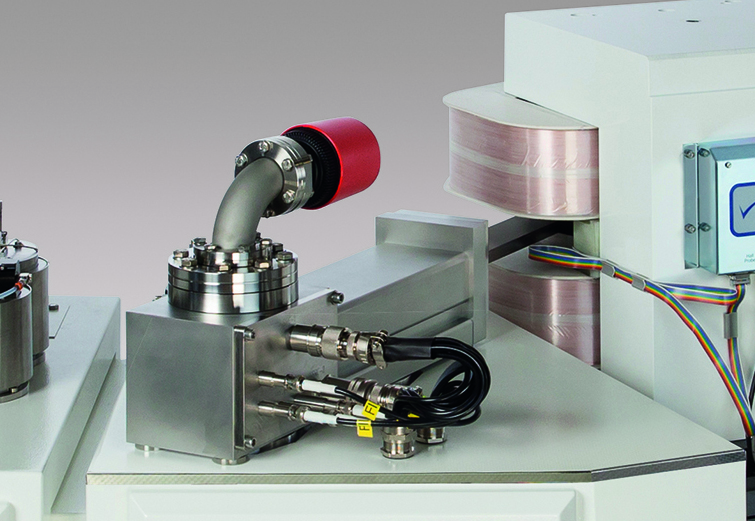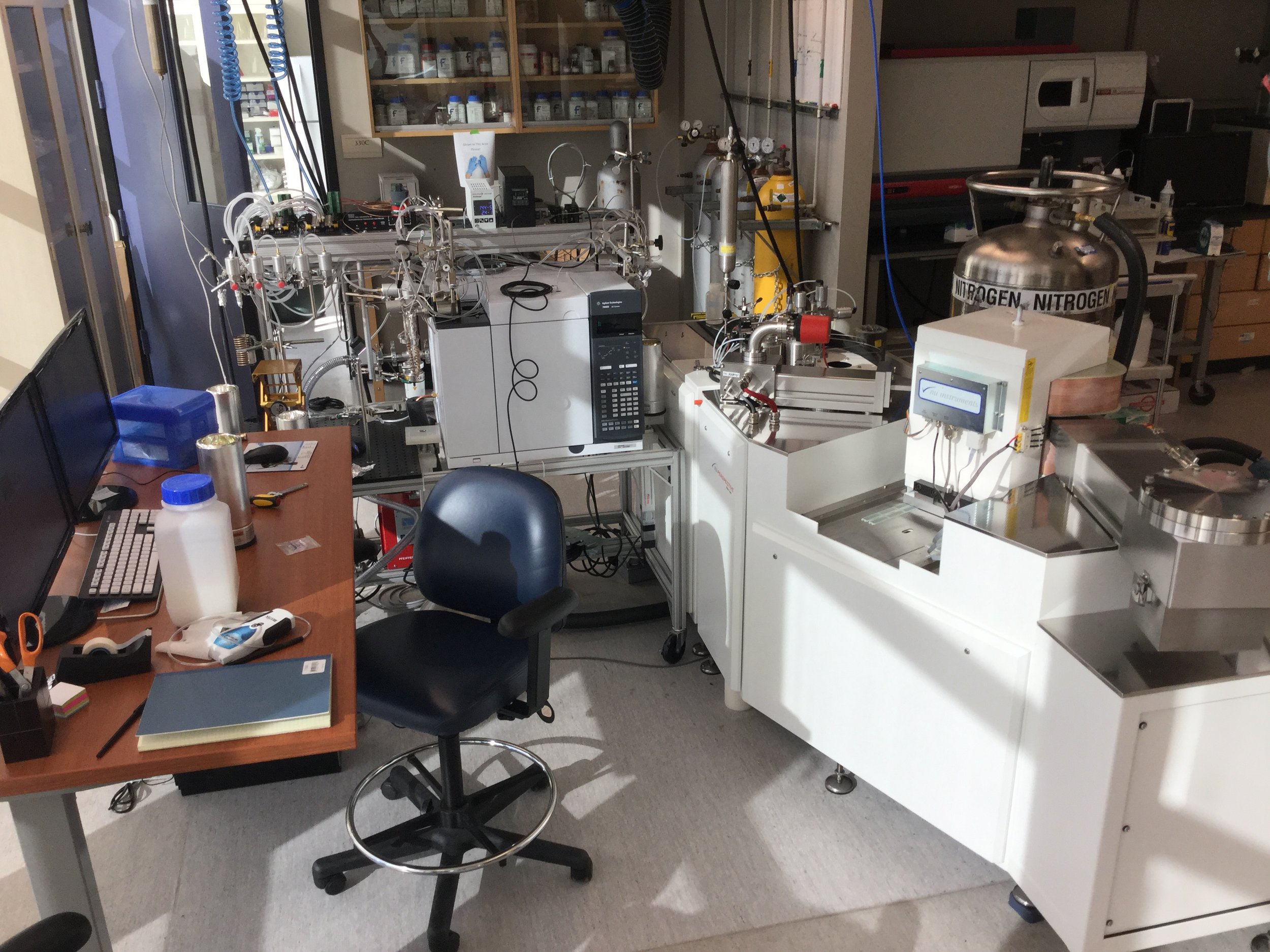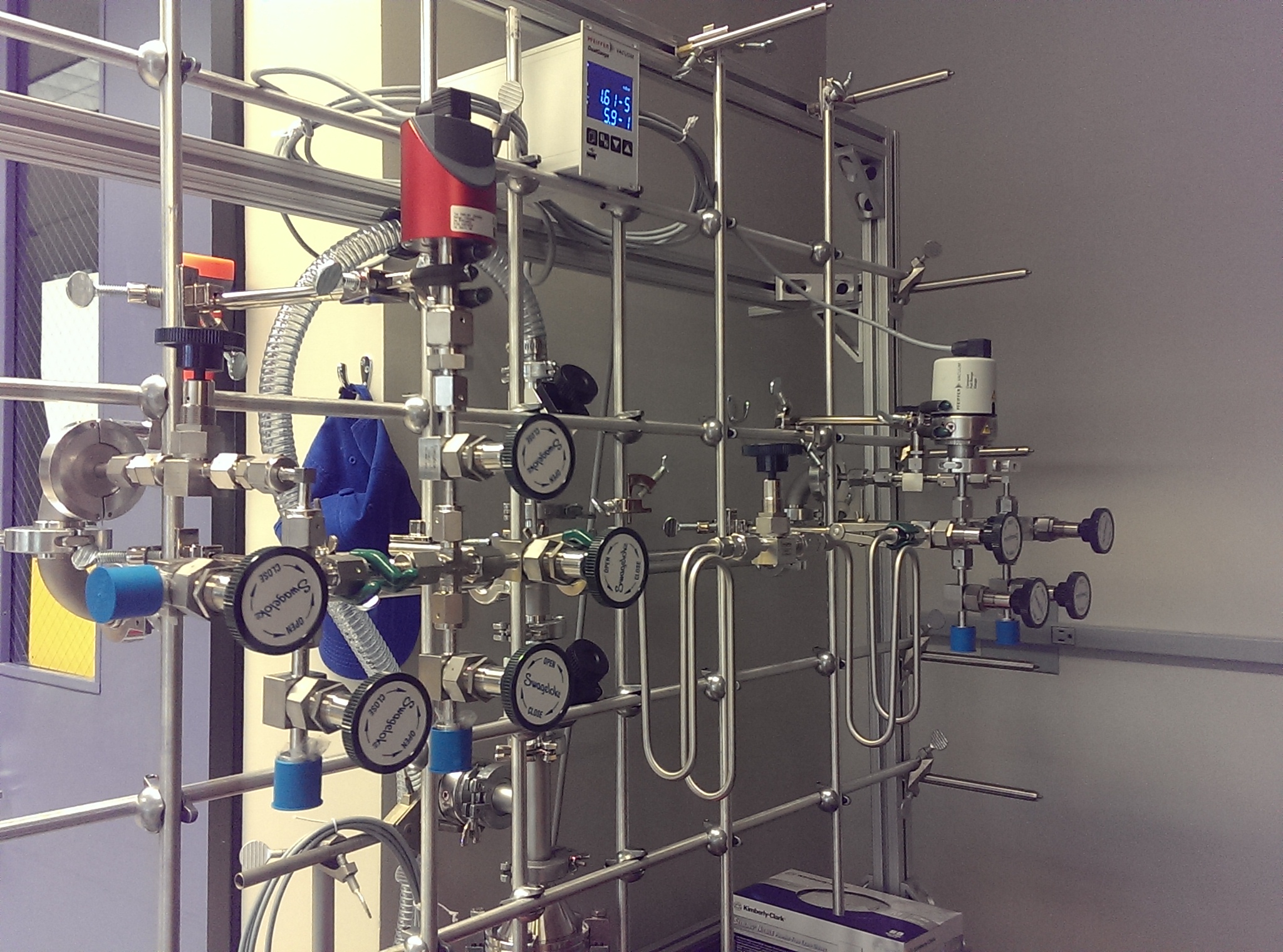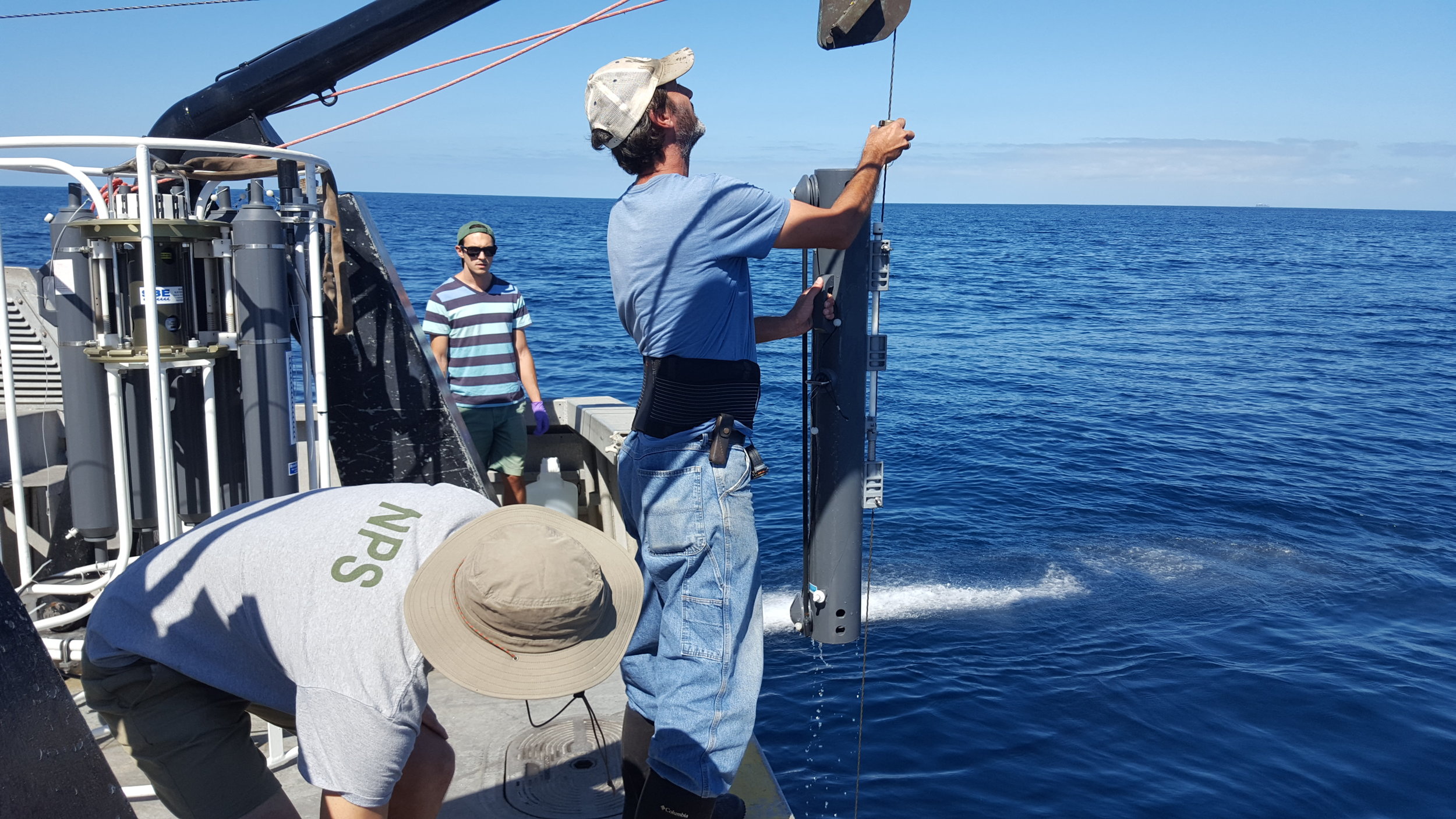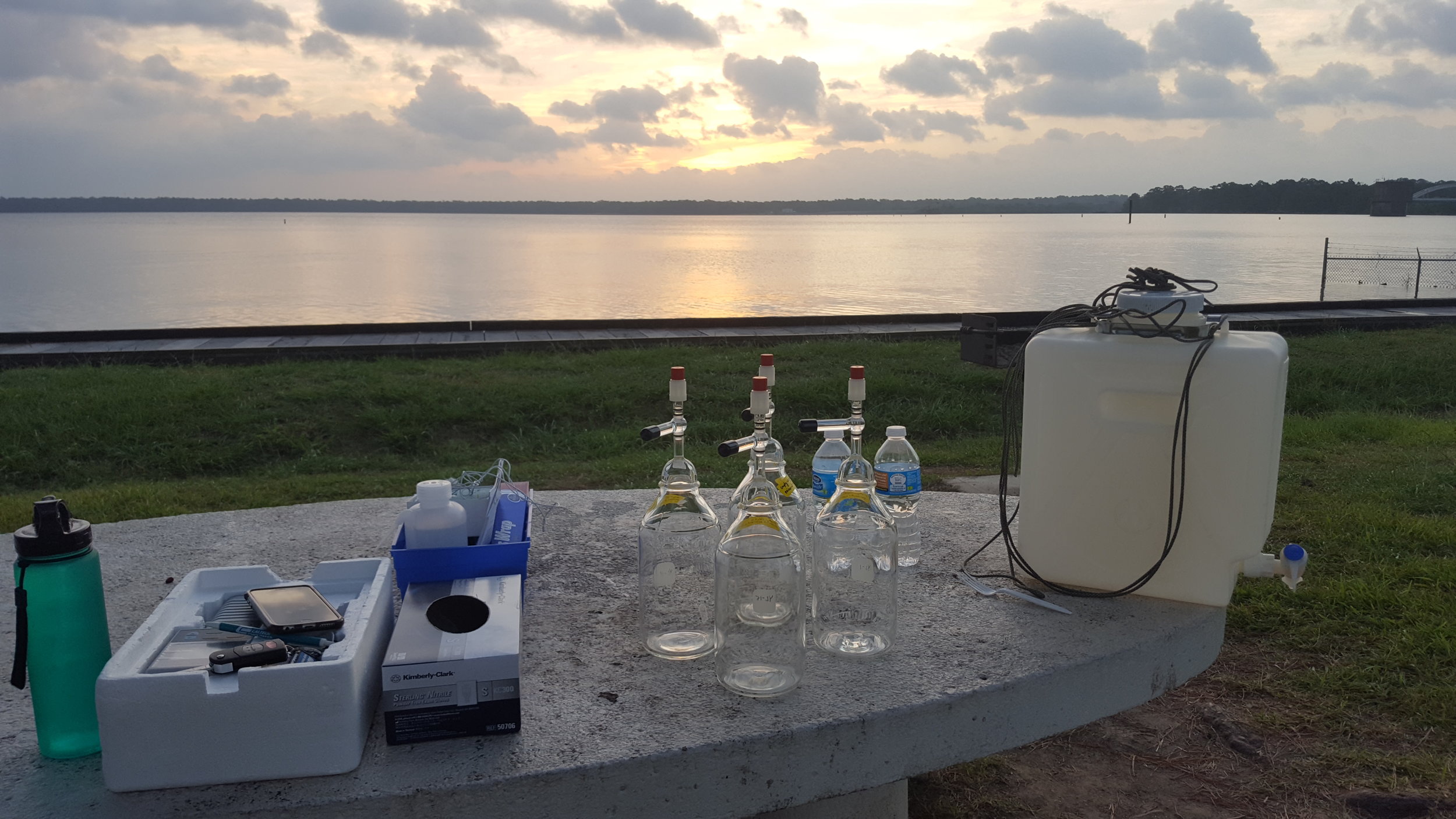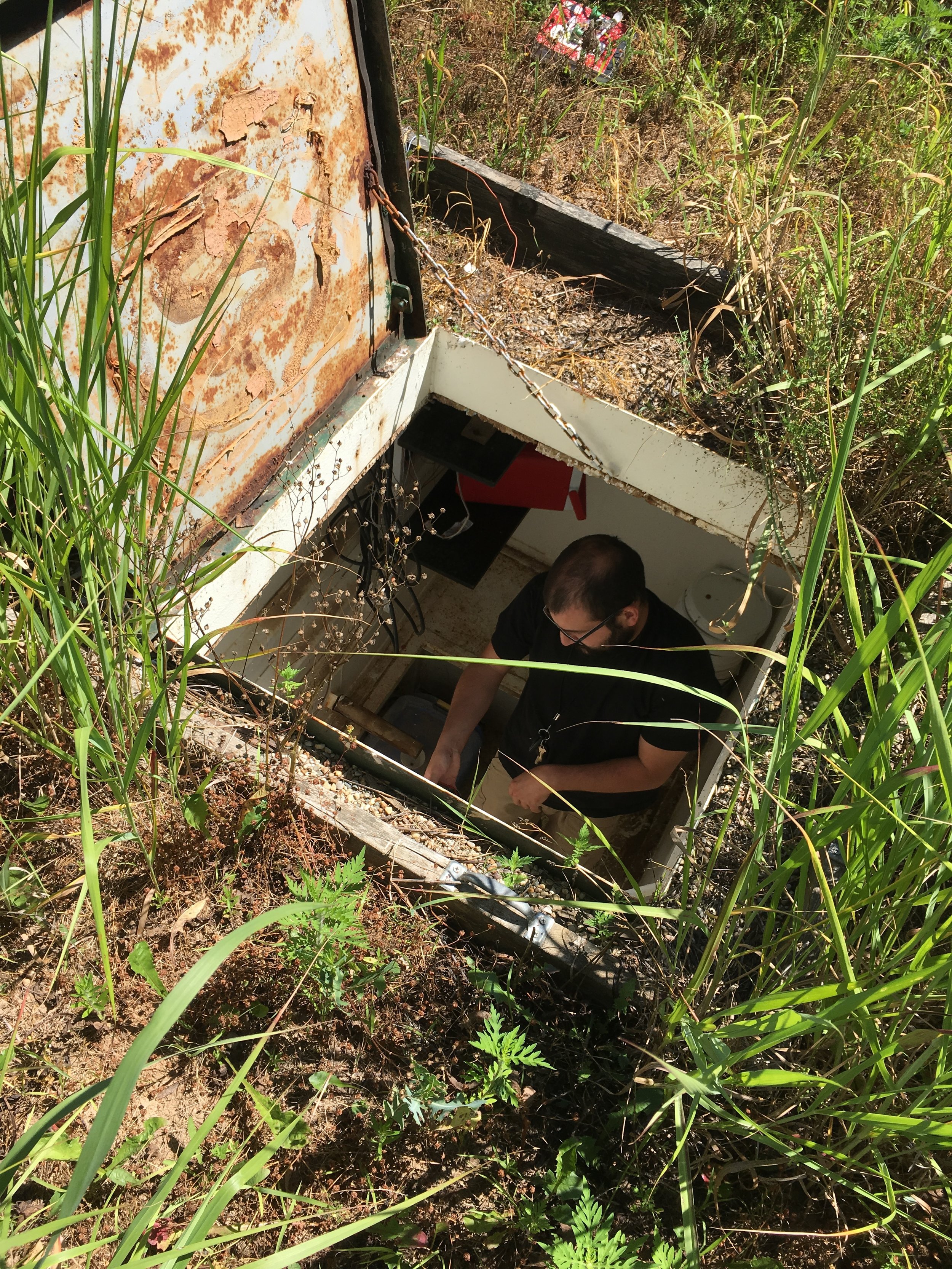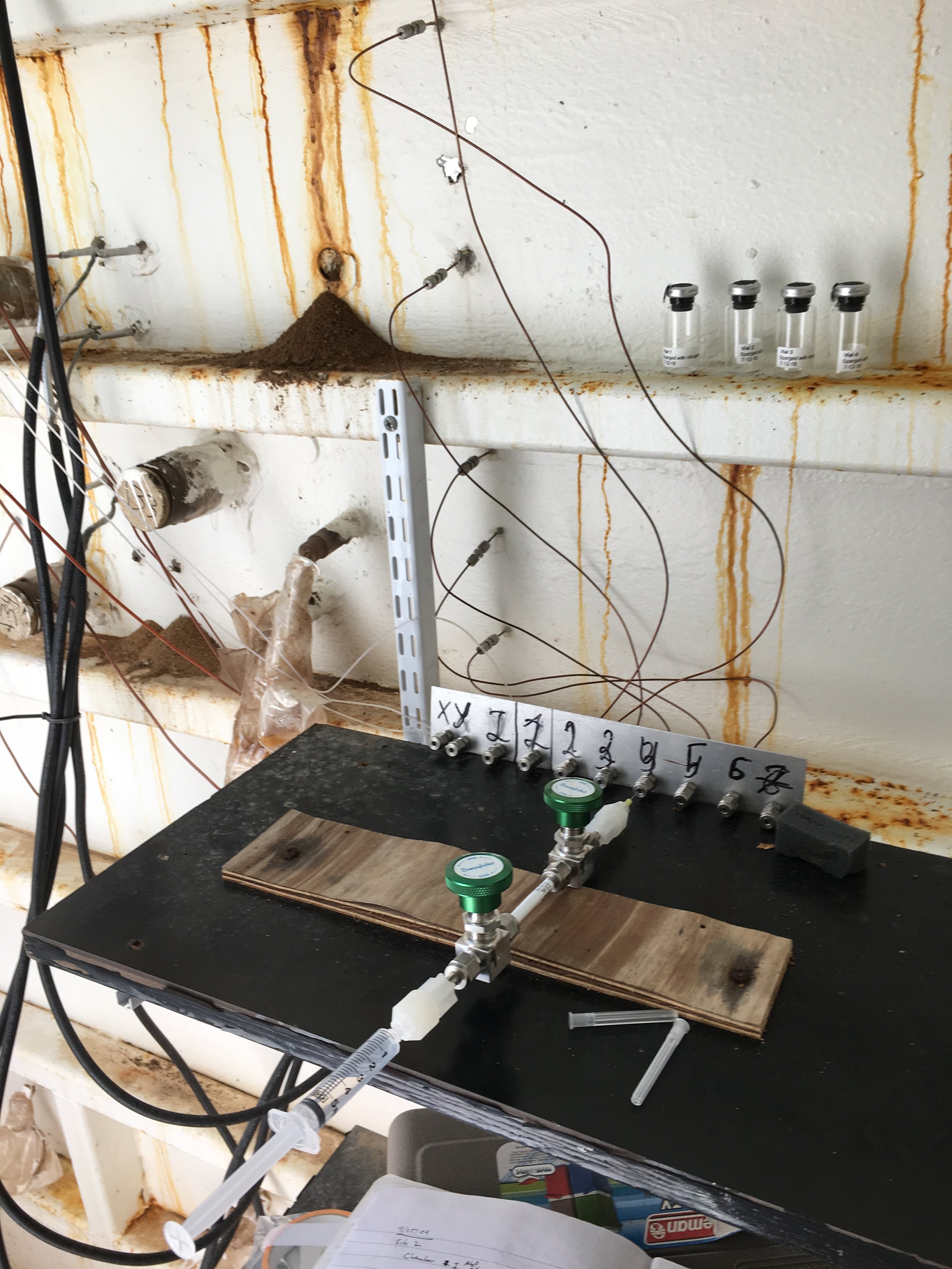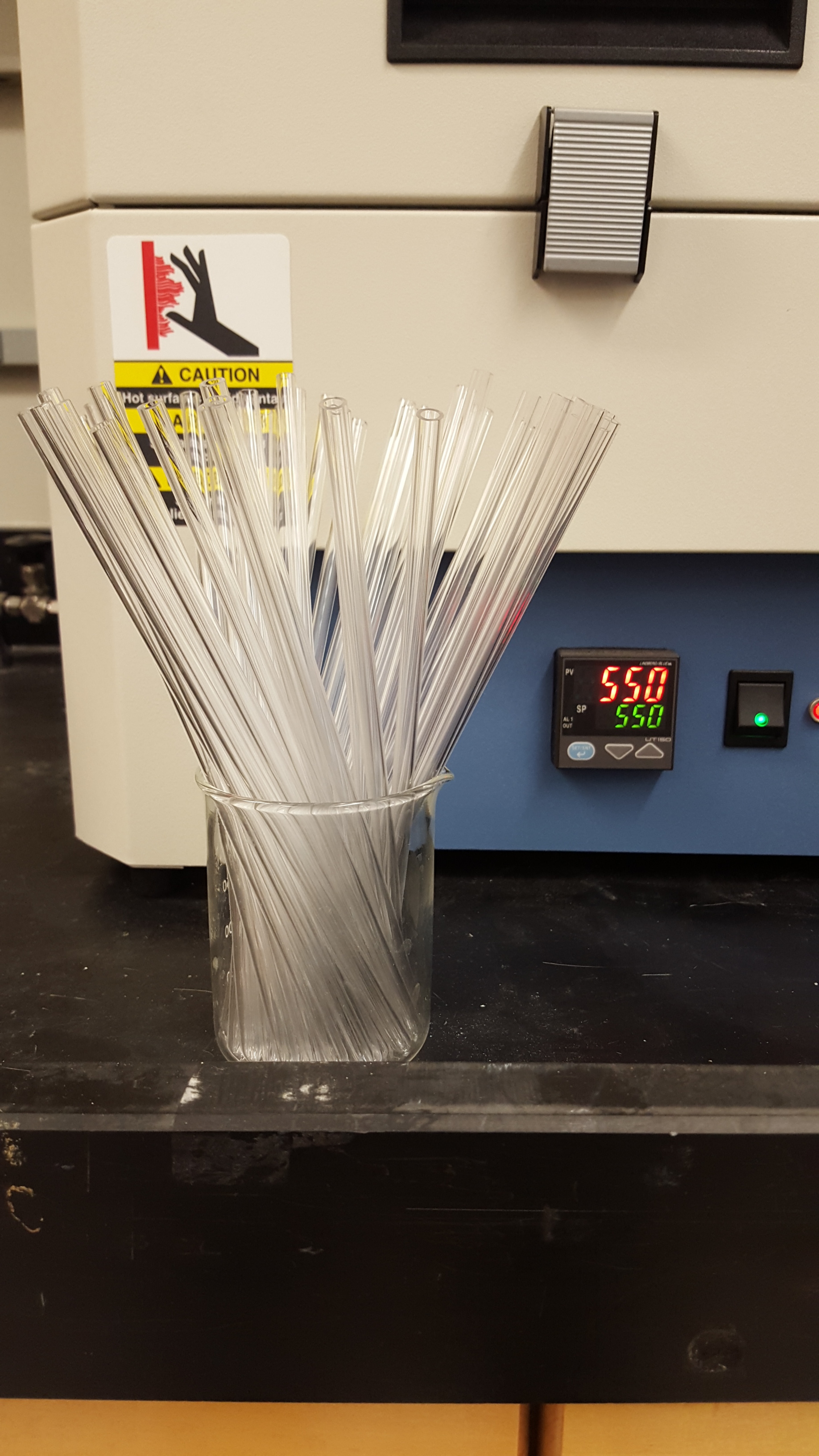What excites us
Isotopic ordering a.k.a. "clumping"
Justin operating the laser-fluorination line (Cin-Ty looking on) to extract oxygen from minerals for isotopic analysis. Justin uses the oxygen to learn about ancient environments.
The extent to which rare isotopes are bound together (or, rather, "clumped") in nature tells us a great deal about how natural materials were formed. While much of the work in the past decade has focused on determining mineral formation temperatures, we are finding that formation pathways can also be recorded. We are using isotopic ordering in O2 and other small molecules as tracers of these processes in nature. We also hope to understand more generally how isotopic "clumps" behave when not at equilibrium so we have a framework in which to interpret their natural variations.
See also:
- Rapid photochemical equilibration of isotope bond ordering in O2
- Biological signatures in clumped isotopes of O2
- Combinatorial effects on clumped isotopes and their significance in biogeochemistry
- Kinetic and equilibrium fractionation of O2 isotopologues during air-water gas transfer and implications for tracing oxygen cycling in the ocean
Atmospheric chemistry and physics
Simulating upper-atmospheric chemistry to determine its effects on isotopic composition.
Atmospheric chemistry manifests itself on the global scale through the general circulation. Air is transported between continents and into the upper atmosphere; it moves from hot to cold regions and back again; it undergoes vigorous photochemistry in one place but not another. The resulting imprint is complex, and many of the species involved are not preserved in records of ancient air. Consequently, there is little information about how the atmosphere's important dynamic processes evolved through time. We are using isotopic ordering in ice cores to trace atmospheric chemistry and general circulation on decadal to millennial timescales. We also have an interest in the long-term evolution of the atmosphere in deep time.
See also:
- Effects of ozone isotopologue formation on the clumped-isotope composition of atmospheric O2
- Isotopic ordering in atmospheric O2 as a tracer of ozone photochemistry and the tropical atmosphere
- Two-step rise in atmospheric oxygen linked to the emergence of continents
- Extreme enrichment in atmospheric 15N15N
- Isotopic constraint on the twentieth-century increase in tropospheric ozone
Biogeochemical cycling
Huanting sampling seawater so she can analyze the isotopic variants of the dissolved gases. They tell us about how life (mostly microbes) uses nutrients, as well as how other aspects of the ocean can affect that.
On a global scale, the relationship between the climate and the biosphere is still poorly known for timescales longer than a century. We want to understand this relationship, and in particular, the biosphere’s response to climate change and human activity. We are therefore working to characterize the mechanisms that govern biogeochemical cycles, and the evolution of those cycles through time. Our current projects involve laboratory and field studies of biological activity in the ocean, and we are developing tools to understand biological nutrient cycling on land.
See also:
- Impact of diatom-diazotroph assemblages on carbon export in the Amazon river plume
- Exact evaluation of gross photosynthetic production from the oxygen triple‐isotope composition of O2: Implications for the net‐to‐gross primary production ratios
- In situ quantification of biological N2 production using naturally occurring 15N15N
Tools of the trade
